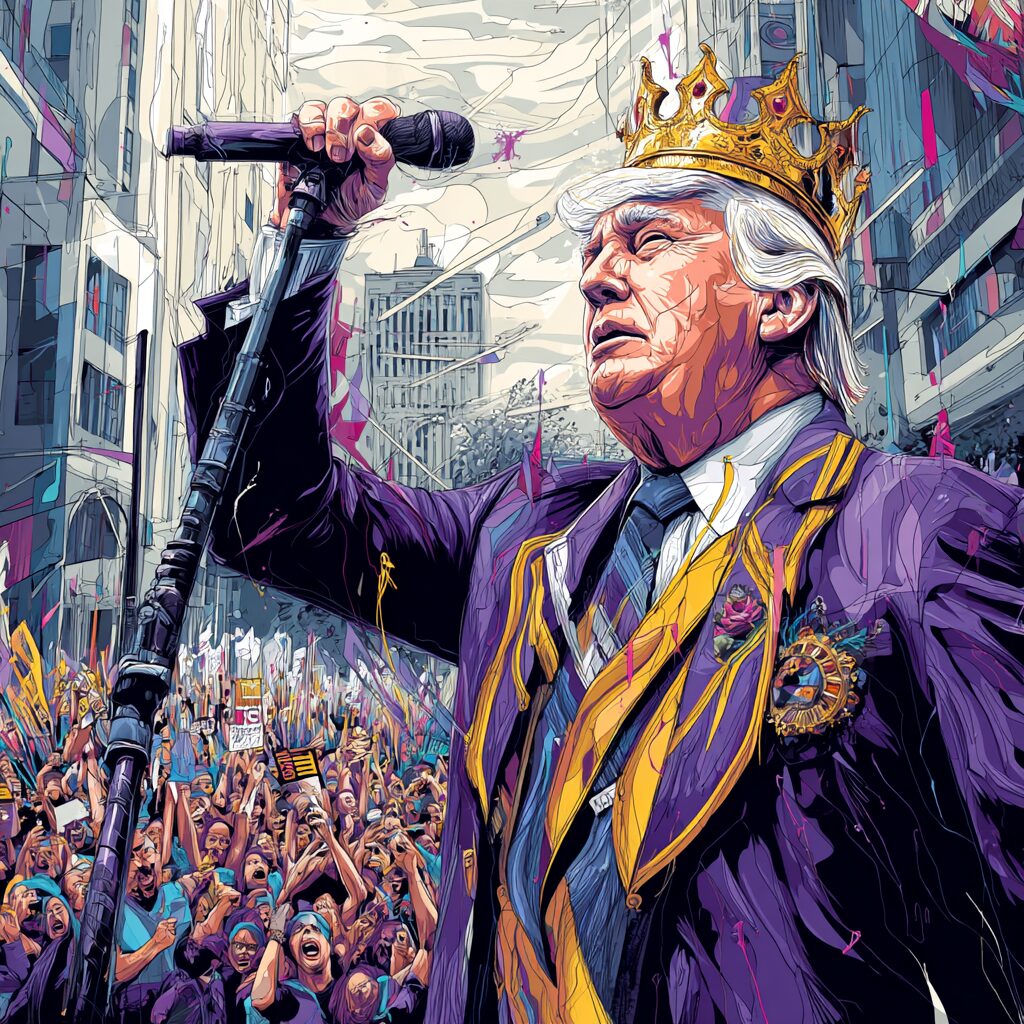No Kings, Only the People: Americans Unite Against Presidential Overreach
From Washington, D.C. to small-town America, millions have taken to the streets under the banner of “No Kings”—a resounding call that democracy belongs to the people, not to any one ruler. The protests, spanning all 50 states, are a direct response to what organizers call unprecedented presidential overreach under Donald Trump’s administration. Chanting “no one is above the law,” demonstrators demand accountability, transparency, and a return to constitutional balance. The message is clear: America’s strength lies not in the power of one, but in the united voices of many defending the ideals of liberty and justice for all.
1. What’s Going On?
On October 18, 2025, the U.S. is witnessing a coordinated wave of demonstrations under the banner of “No Kings protests” — held in all 50 states and thousands of cities. No Kings+3The Washington Post+3The Guardian+3
The slogan speaks for itself: “No Kings” is a metaphorical way of stating “no one is above the law”, and that in America the power resides with the people — not a king, not a dictatorship. Organizers are calling out the current administration under Donald Trump for actions they say undermine democratic norms and concentrate power. No Kings+2TIME+2
2. Why It Happened (Roots & History)
-
The name and concept build on America’s anti-monarchical heritage: the idea that no one should wear a crown or wield unchecked power.
-
The first major “No Kings” mobilization happened on June 14, 2025 — across some 2,000+ locations with estimated millions participating. Wikipedia+2Politico+2
-
This October demonstration is positioned as a second large national “day of action,” with over 2,600 events planned. The Washington Post+1
-
Organizers include coalitions such as ACLU, Indivisible, the American Federation of Teachers, and more. Wikipedia+1
3. What the Movement Is Saying
Here are key themes the protesters highlight:
-
Democratic backsliding & executive overreach. The argument: the Trump administration is increasingly acting like a king-in-waiting, using federal power, deploying forces domestically, and diminishing checks and balances. The Guardian+1
-
Immigration & ICE controversies. The administration’s aggressive enforcement, mass removals, work-site raids, and family separations are cited as flagrant abuses of power placed on vulnerable populations. (More on this below.)
-
Corruption & ethics concerns. Protesters point to conflicts of interest, the use of the presidency for personal benefit, pardons/commutations of allies, and legal troubles as indicators of a system tilted toward a “ruler” rather than a public servant.
-
Civil liberties & dissent. Many protesters cite concerns over suppressed free speech, protest policing, National Guard deployments, labeling of dissenters as “terrorists,” and other signs of crackdown. Wikipedia+1
4. Deep Dive: Immigration, ICE & Why It Matters
-
Under Trump, enforcement by U.S. Immigration and Customs Enforcement (ICE) rose dramatically, especially in terms of non-criminal arrests. For example: in early 2017 vs. 2016, ICE administrative arrests increased by ~38%. No Kings+1
-
The “zero-tolerance” policy (2018) separating children from parents at the border became a global scandal. No Kings
-
Critics argue that targeting migrants, unleashing federal enforcement in local jurisdictions, and using immigration policy as political spectacle are part of the “authoritarian” toolkit.
-
Protesters see this as more than policy: they argue it reflects who holds power, and who bears the cost. By mobilizing around ICE, the movement asserts that the law must apply equally — not be used to subjugate certain groups.
5. Deep Dive: Corruption, Power & Why “King” Language
-
The phrase “No Kings” doesn’t just refer to immigration or single policies — it refers to a broader concern: that the presidency is being treated as royal, with privileges, lack of accountability, and a diminished role for checks.
-
Cases cited by protesters: lawsuits alleging violations of the Emoluments Clause (payments from foreign/domestic governments benefiting Trump’s businesses). Although some courts dismissed the cases, the symbolic point remains. No Kings+1
-
Impeachments: Trump was impeached twice by the House (2019, 2021) though acquitted in the Senate. One focused on abuse of power and obstruction; the other on incitement of insurrection. (These feed the narrative of power misuse.)
-
The “clemency/commutation” mechanism is also seen as problematic: when pardons regularly go to political allies, critics say it subverts accountability.
-
Alongside policy, the optics matter: military-style parades, use of federal forces domestically, rhetoric about “rulers,” and national guard deployments all feed the “kinglike” motif. Protestors say: this isn’t how a republic behaves.
6. The Dynamics of the Movement
-
Non-violent strategy: Organizers are training volunteers in de-escalation, safe protest conduct, rights awareness, and community coordination. The message: large, peaceful, visible. TIME+1
-
Symbolism: Protesters are urged to wear yellow as a unifying color. They also highlight that in democracies, massive non-violent movements have historically forced change.
-
Messaging: “We are the people. We decide.” The movement frames itself as something patriotic, not fringe — arguing defending democracy is not partisan.
-
Opposition: GOP officials have not remained silent. Some have labelled the protests “hate-America rallies” or associated them with extremist groups. Some states have activated the National Guard pre-emptively. The Guardian+1
7. Why It Matters for Democracy
-
If you believe that the health of a democracy depends on popular sovereignty, rule of law, separation of powers, transparency, then a mass protest of this scale signalling “enough is enough” is worth attention.
-
Movements like this can shift the Overton window (what’s considered acceptable). Large turnout could influence policy, elections, or governmental behavior.
-
That said, protests aren’t the only leverage — they must tie into elections, legislation, culture, local community organizing. The “No Kings” movement seems aware of this (they have toolkits, trainings).
-
This moment is especially charged because we’re not just talking about one policy — protesters are talking about the shape of power itself. If unchecked power becomes normalized, precedent matters.
8. What to Watch Tonight & Going Forward
-
Turnout and geography. Which cities see the greatest turnout? Will rural/small town America participate beyond urban centers?
-
Law enforcement response. Will protests remain peaceful? How will local/federal forces act? Any crackdown could escalate dynamics.
-
Media framing. Will media describe this as legitimate civic action, or will it emphasise fringe elements/violence? The framing matters for public opinion.
-
Political reaction. Will elected officials respond — either by acknowledging the concerns or doubling down? Will this impact mid-terms or local races?
-
Follow-up strategy. A single day of protest is symbolic. The key questions: What happens next? Do organizers keep momentum, translate it into legislation, candidate support, community action?
9. Final Thoughts
“What does it all add up to?” you might ask. In simple terms: Today’s protests reflect a serious debate happening in the U.S.: Do we continue as a functioning republic with real checks on power — or do we drift toward a system where executive dominance and weakened accountability become the new norm?
The “No Kings” movement is saying: We, the people, choose the former. And they’re putting their bodies and voices on the line to prove it.


Leave a Reply